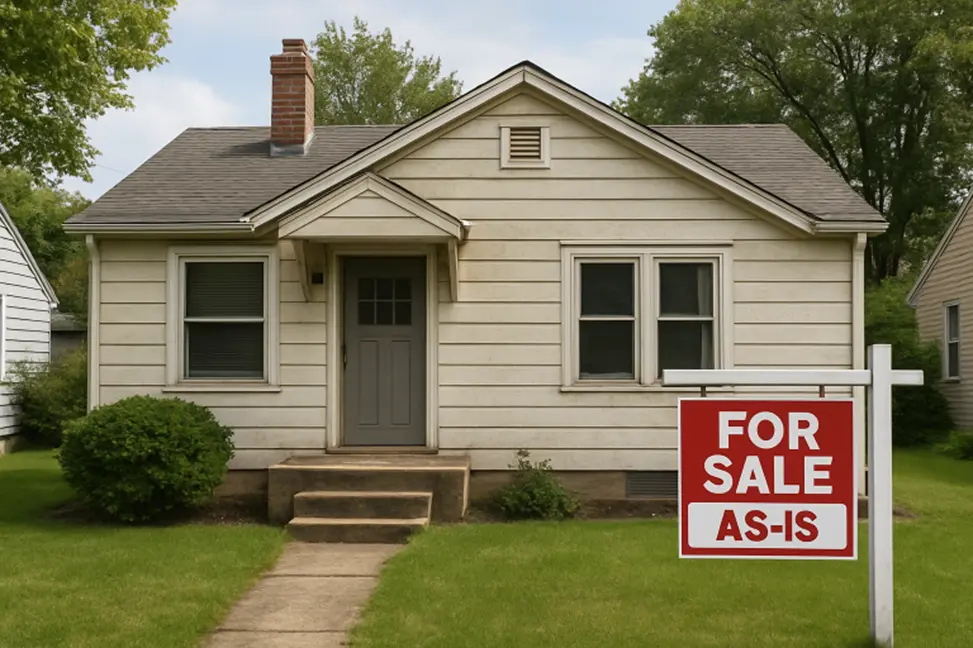Understanding As-Is Home Sales
Selling a home “as-is” means offering your property in its current state, without committing to fixing any defects or making improvements before the sale. This can be an attractive option for homeowners seeking a quick sale. With this method, buyers know they’re purchasing the property with all its faults, putting repairs and upgrades in their hands rather than the seller’s.
Many sellers appreciate that as-is sales typically involve fewer negotiations about repairs and are often faster to close than traditional real estate transactions. However, it’s crucial to understand that while you can avoid costly renovations, there are still specific responsibilities and market realities to navigate when deciding to sell as-is.
In some cases, selling as-is can be the best route when time or money is short, but every seller should weigh the trade-offs involved in this approach.
Reasons Sellers Opt for As-Is Sales
The motivations for selling a property as-is are diverse but often center around three primary scenarios:
- Financial Constraints:Homeowners may lack the resources to complete needed repairs and choose to compensate by accepting a lower purchase price.
- Inherited Properties:People who have inherited homes frequently want to liquidate quickly and without the emotional or financial load of fixing the property.
- Time Sensitivity:Unexpected life events such as job changes, health issues, or financial hardship can require a rapid sale, making the as-is approach ideal.
These practical considerations can override the potential to earn a higher price through traditional sales methods.
Legal Obligations and Disclosures
It’s a common misconception that selling “as-is” means sellers can skip legal disclosures. Most states still require you to disclose any known material defects—problems with the property that could affect its value or desirability. For example, in states like California, sellers must provide a Transfer Disclosure Statement, while other states may have their own forms and rules.
These disclosure requirements still apply even in transactions involving fast cash offers. Failure to disclose known issues can expose sellers to lawsuits after the sale closes, making transparency critical. Consulting with a real estate professional or attorney is often wise to ensure all legal obligations are thoroughly met.
Impact on Sale Price
Selling a property as-is significantly influences what buyers are willing to pay. Most expect a discount to compensate for the repairs and risks they’re assuming. National averages suggest that as-is sales can result in offers 30% to 50% below typical market value. Depending on your home’s location and condition, the hit to your bottom line could be substantial, but you gain speed and convenience in return.
Attracting the Right Buyers
Success with an as-is sale depends largely on appealing to the correct buyer demographic. Investor groups, flippers, and cash buyers are usually most interested, as they have the resources and experience needed to handle significant repairs. These buyers often value the opportunity for a quick, complication-free transaction, which makes them ideal targets for as-is listings.
Direct marketing to these groups, and clearly setting expectations in your listing, can help attract more offers and avoid the disappointment of deals falling through due to inspection surprises.
Preparing for an As-Is Sale
- Obtain a Pre-Listing Inspection:Even if you don’t plan to fix anything, a pre-listing inspection can clarify what needs work and allows you to price and market your property honestly. This transparency is reassuring to buyers, who don’t want surprises during purchase.
- Set a Competitive Price:Assess the realistic value of your home, factoring in its imperfections. Homes priced too high tend to linger, while those accurately reflecting their state draw more interest and offers.
- Market Effectively:Focus on your property’s potential and unique features to appeal to buy-and-hold investors or renovators looking for customizable opportunities.
Legal and Practical Steps
Work with an experienced agent who understands local laws and the unique dynamics of as-is sales. They can help you craft honest listing descriptions, make disclosure documents available, and set buyer expectations early in the process.
Potential Challenges
While selling as-is delivers some benefits, it also narrows your potential buyer pool. It may subject you to tough negotiations—especially if inspections uncover more serious issues than you initially disclosed. Some buyers may also back out if their lenders require repair contingencies or if they are risk-averse, so flexibility and preparedness are key.
Staying realistic and upfront with information ensures fewer surprises, less renegotiation, and a more predictable path to closing.
Final Thoughts
An as-is home sale provides a straightforward path to offload a property without the expense and time of repairs. While sellers surrender some potential profit for convenience and speed, many find this trade-off worthwhile. By understanding your legal duties, preparing your home thoughtfully, and targeting the right buyer base, you can achieve a smooth and stress-free sale—even in a competitive market.
